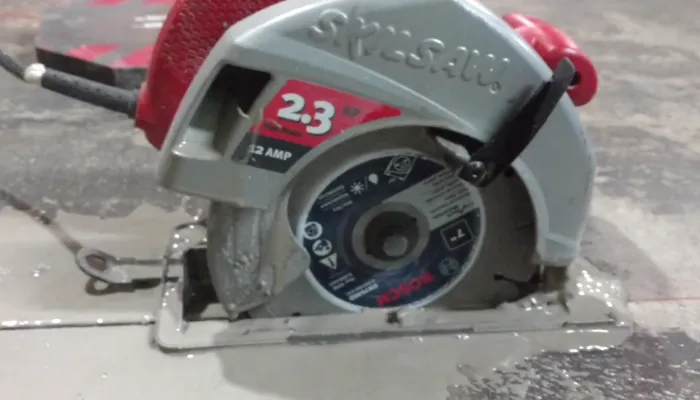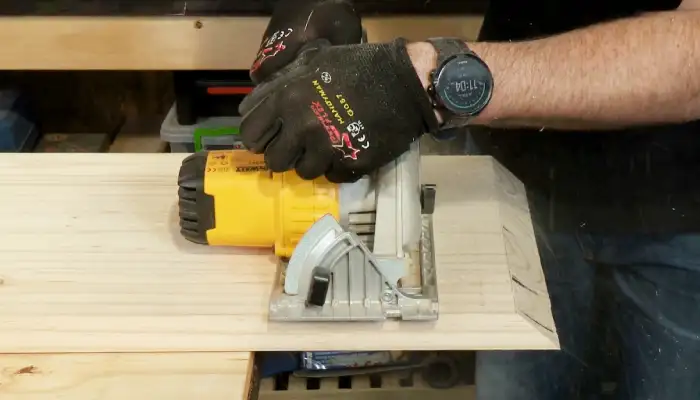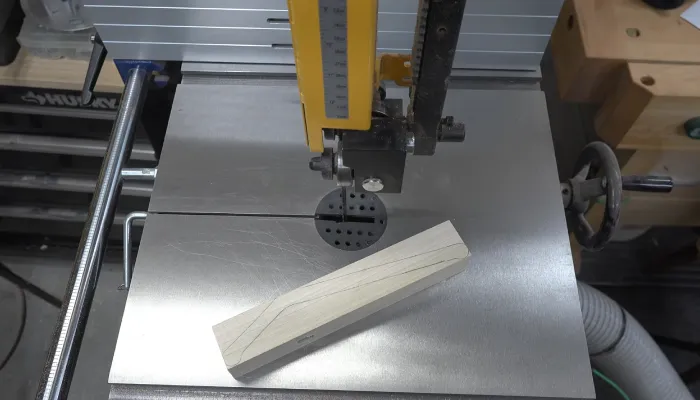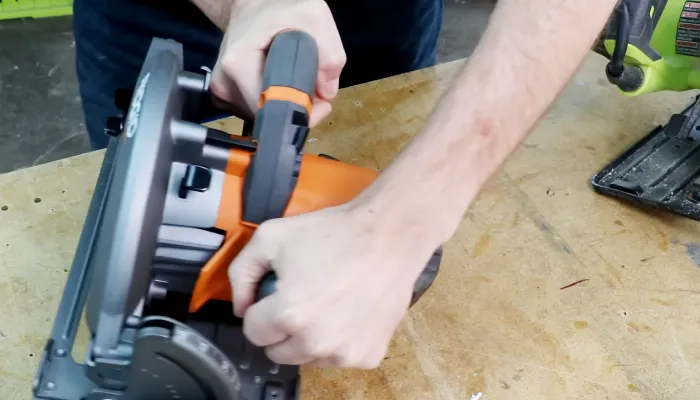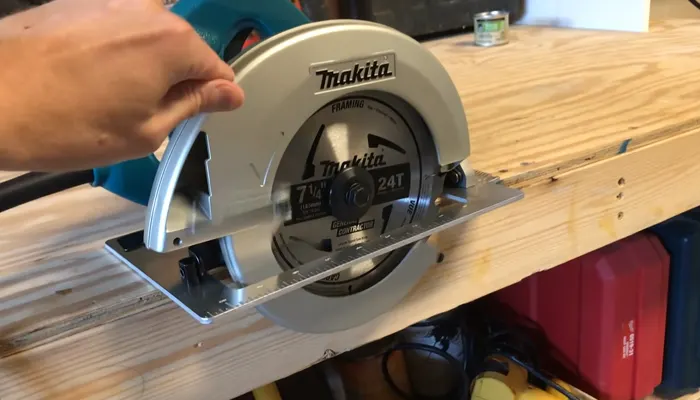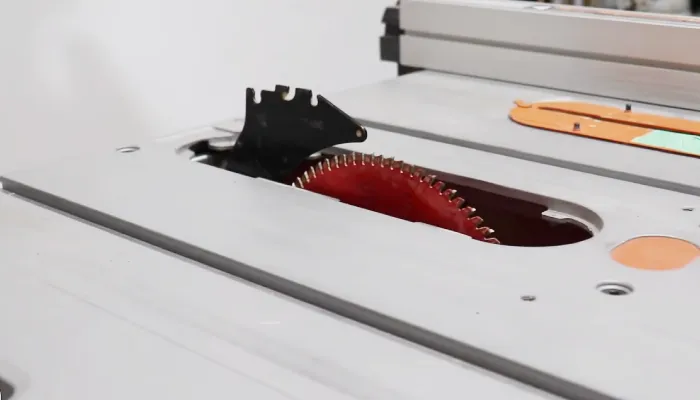Can You Cut Concrete With a Circular Saw: Find the Truth
I’ve always wondered if cutting concrete using a circular saw is possible. The thought of slicing through that solid, tough material seems daunting. However, after researching, I discovered that it is indeed possible. Still, there are certain considerations and precautions you need to keep in mind.
You must use a diamond blade specially designed for the job to cut concrete. These blades are more durable and effective than regular blades. A wet diamond saw blade is also recommended for clean and precise cuts.
Wet cutting helps control dust and keeps the blade cool during operation. Also, ensure that your electrical tools are plugged into a Ground Fault Circuit Interrupter (GFCI) outlet to prevent electric shocks in case of water contact.
As part of this article, I’ll share the techniques and precautions for using a circular saw to cut concrete. So keep reading.
How to Cut Concrete Using a Circular Saw: 4 Step-by-Step
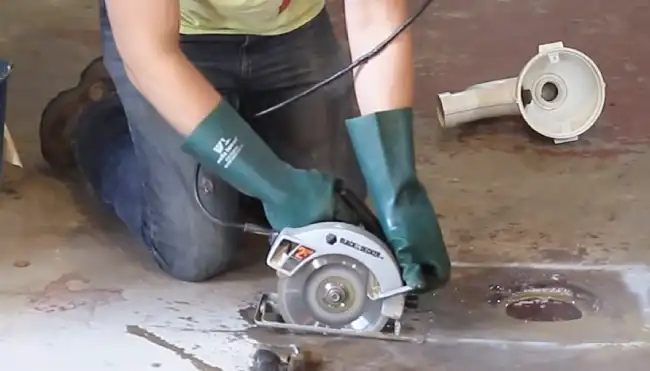
I’ve listed four important steps to cut concrete using a circular saw effectively:
- Prepare your work area
- Set up your circular saw and diamond blade
- Apply safety precautions during cutting
- Implement safe cutting techniques
Necessary Materials and Safety Gear
Before you start, ensure you have all the necessary materials and safety gear:
- Circular saw with a Sidewinder style (e.g., Porter Cable PC13CSL)
- Diamond blade suitable for concrete (e.g., Bosch DB 7 for 1c)
- Ground Fault Circuit Interrupter (GFCI) outlet
- A water source for wet cutting
- Heavy clothing, steel-toed boots, shin guards, knee pads
- Safety goggles, dust respirator mask, and ear protection
Step 1: Prepare Your Work Area
Cutting concrete with a circular saw can be dangerous, so choose a well-ventilated area, preferably outdoors, to ensure workspace safety.
There must be ample space to maneuver the saw and prevent potential hazards. Additionally, a well-ventilated area helps disperse any dust or fumes generated during cutting.
To further enhance safety, ensure the circular saw is plugged into a GFCI outlet. This protects against electric shocks, especially if water is involved in cutting. Prioritize electrical safety to minimize the risk of accidents.
Step 2: Set Up Your Circular Saw and Diamond Blade
After preparing the work area and ensuring safety measures, set up the circular saw and diamond blade for cutting concrete.
Ensure the circular saw is in good working condition and the blade is securely attached. Then, adjust the blade depth to roughly three-quarters of an inch. This depth helps prolong the blade’s life and allows for efficient cutting.
Select a diamond blade suitable for concrete cutting, such as the Bosch DB 7 for 1c, which is a segmented-style blade suitable for wet or dry cuts.
Step 3: Apply Safety Precautions During Cutting
Wear all the necessary safety gear to protect yourself while cutting concrete using a circular saw. This includes steel-toed boots, heavy clothing, safety goggles, a dust respirator mask, and ear protection. These safety precautions are essential to prevent injuries and minimize the risks associated with cutting concrete.
Step 4: Implement Safe Cutting Techniques
To safely cut concrete with a circular saw, implement proper cutting techniques. Ensure the blade is properly positioned and securely tightened onto the saw. When cutting, use a steady and firm motion, keeping the saw aligned with the marked lines.
To prevent dust creation, angle the water flow from the back of the saw towards the blade. Additionally, trickle water onto the blade throughout the cut to keep it cool and prevent overheating.
What to Consider When Cutting Concrete Using a Circular Saw?
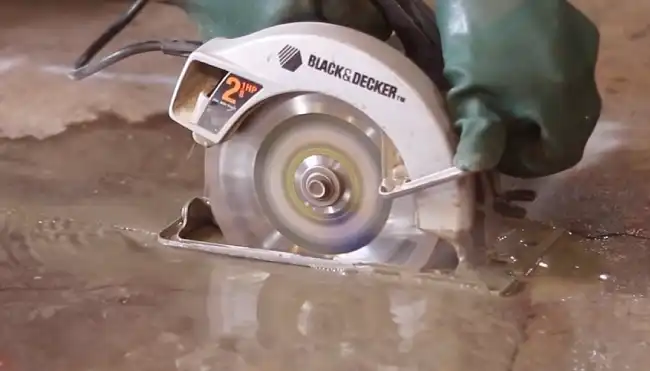
Several important factors must be considered when cutting concrete using a circular saw.
1. Safety First: Gear Up for Protection
Proper safety gear is paramount when cutting concrete using a circular saw. It ensures personal protection and minimizes potential hazards. Steel-toed boots protect against falling objects and accidental contact with the saw blade.
Heavy clothing, shin guards, and knee pads protect against cuts and scrapes from flying debris. Safety goggles shield your eyes from dust, debris, and potential eye injuries.
A dust respirator mask filters harmful particles and prevents respiratory issues. Lastly, ear protection is crucial to minimize the risk of hearing damage due to the loud noise generated by the circular saw.
2. Blade Selection: The Diamond Difference
Diamond blades for cutting concrete using a circular saw ensure durability and precision. These blades are specifically designed with synthetic diamonds embedded on a reinforced steel disc, making them highly effective in cutting through concrete.
Unlike standard blades, diamond blades are capable of withstanding the extreme hardness of concrete, ensuring a longer lifespan and reducing the need for frequent blade replacements. The synthetic diamonds on the blade’s edge provide a sharp cutting surface, allowing for clean and precise cuts.
3. Depth Dilemma: Standard or Specialized
Standard circular saw blades typically have a cutting depth of around 2.5 inches, which makes them suitable for projects with concrete thickness within this range. However, attempting to cut concrete thicker than 6 inches with a standard blade can damage the blade and pose a risk of personal injury.
For larger projects or thicker concrete slabs, it’s advisable to utilize dedicated concrete saws or cut-off saws designed specifically for such substantial tasks. These specialized tools can provide greater cutting depths and are more equipped to handle the demands of cutting through thicker concrete.
4. Wet or Dry Cutting: Cooling and Controlling Dust
Use a wet circular saw to cut concrete. Wet cutting, which uses a wet diamond saw blade, offers several advantages. It ensures clean and precise cuts, resulting in a professional finish.
Also, the water used during wet cutting helps to control dust, reducing the risk of respiratory issues and keeping the work area clean. Furthermore, the water acts as a coolant, preventing the blade from overheating and extending its lifespan.
On the other hand, dry-cutting blades are heat-resistant but may produce more dust. They are suitable for smaller projects where dust control is less critical.
5. Cutting Technique Refinement: Water Flow and Angle
Pay close attention to the water flow and angle to refine the cutting technique when using a circular saw to cut concrete. Adjusting the water flow is crucial, depending on the type of circular saw being used.
A lighter water flow is sufficient for Sidewinder style saws, while wet-type saws require more water. This ensures proper cooling of the blade and prevents it from overheating.
Additionally, make sure the water flows from the back to minimize dust creation. Directing water towards the cutting area suppresses dust and keeps the workspace clean.
6. Electrical Safety: Guard Against Shocks
Electrical safety must be prioritized when cutting concrete using a circular saw to prevent shocks and ensure a secure working environment.
One crucial step in safeguarding against electric shocks is ensuring your circular saw is plugged into a GFCI (Ground Fault Circuit Interrupter) outlet. This type of outlet is designed to quickly shut off power during an electrical fault, such as water coming into contact with the tool.
Using a GFCI outlet significantly reduces the risk of electric shock when working with a circular saw in wet conditions. Additionally, inspecting the power cord for any signs of wear or damage before use is essential.
7. Blade Maintenance: Prolonging Blade Life
It’s advisable to set the depth to approximately three-quarters of an inch. This helps to prevent excessive wear and tear on the blade. Also, cutting only the depth of each diamond tooth is crucial. This ensures that the blade remains sharp throughout the entire concrete cutting project.
How thick of concrete can a circular saw cut?
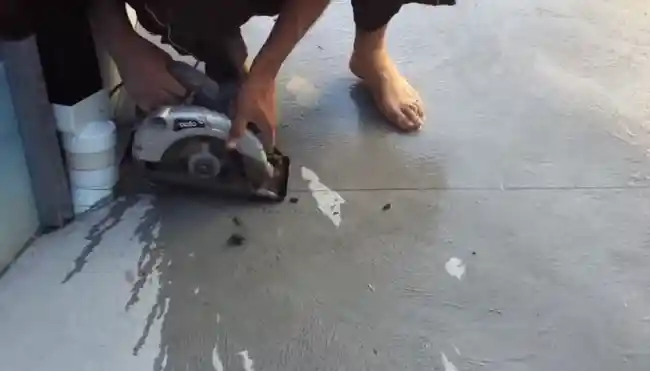
A standard circular saw can cut concrete up to a maximum thickness of 2.5 inches. However, some special blades can cut up to 7 inches. This limitation is due to the size and power of the saw blade, which typically has a diameter of around 7.25 inches. The saw is designed to cut through various materials, including wood and metal.
However, concrete’s hardness and density pose a challenge. The circular saw blade can only penetrate a certain depth before its efficiency and effectiveness decrease significantly.
Can I cut 4-inch thick concrete with a circular saw cut?
To cut 4-inch thick concrete slabs with a circular saw, you’ll need a specialized diamond blade designed for cutting through thick and dense materials. A regular circular saw blade isn’t suitable for this task as it won’t have the strength or durability to cut through such a thick material.
The diamond blade is designed to withstand the extreme pressure and friction of cutting through concrete. It has diamond grit embedded in the blade’s edge, allowing it to grind through the concrete effectively.
How do you cut a concrete slab with a circular saw?
When cutting a concrete slab with a circular saw, regularly check the depth of the cut to ensure accuracy and precision. Equip the circular saw with a diamond blade designed for cutting concrete. These blades are specifically designed to withstand the hardness and abrasiveness of concrete.
Also, using a wet saw to minimize dust and keep the blade cool during cutting is recommended. Before cutting, mark the desired cutting line on the concrete slab using a chalk line or a straightedge.
Clean, Precise Concrete Cuts with Circular Saws
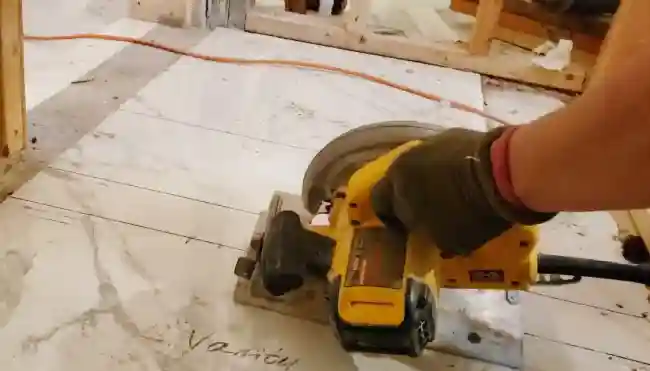
Cutting concrete using a circular saw is possible with the right blade and approach. Based on my findings, I recommend using a diamond blade designed for cutting through concrete to achieve clean and precise cuts.
Wet cutting is also recommended to keep the blade cool and control the dust generated. Safety should always be your top priority when using power tools, so take all the necessary precautions before cutting concrete.
With the right preparation and tools, cutting concrete can be a manageable task that yields impressive results.

